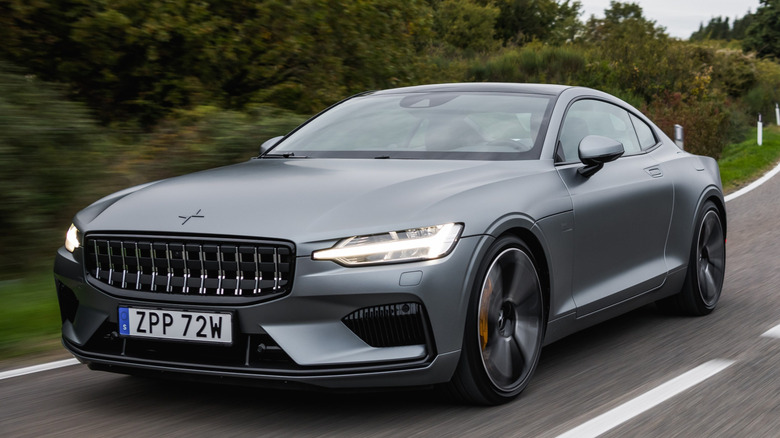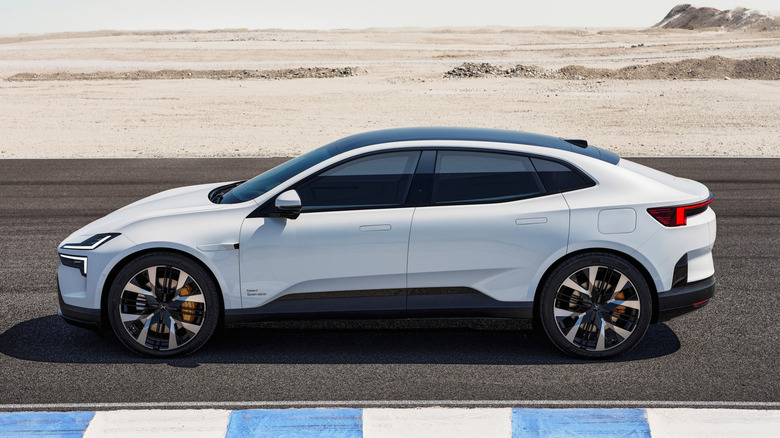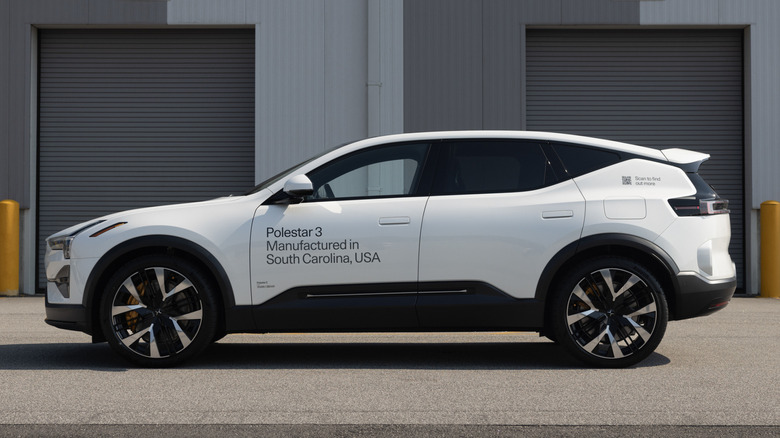Who Owns Polestar And Where Are Its Cars Made?
Polestar has had a long and interesting history on its way to becoming a manufacturer of electric vehicles (EVs). The company started out as a vehicle tuner, which led to a collaboration with Volvo in 1996 to become their in-house tuning arm. The result was several high-performance Volvos that also carried the Polestar name, including the Volvo V60 Polestar and the Volvo S60 Polestar. After being owned for 11 years by the Ford Motor Company, Volvo was subsequently purchased by Zhejiang Geely Holdings in 2010. Geely is a huge Chinese automaking conglomeratethat also owns car brands such as Smart, Lotus, Proton, Geely Auto, LYNK & Co, and ZEEKR.
In 2015, Volvo bought all of Polestar and incorporated it into Volvo as a dedicated performance sub-brand, much like M does for BMW or AMG does for Mercedes-Benz. Then, in 2017, Polestar was spun off from Volvo to become an independent performance EV brand. Geely and Volvo provided Polestar with 640 million Euros as a starting investment in the new Polestar enterprise.
As of the first quarter of 2024, Geely Holdings owns 24% of Polestar shares, with Volvo holding 18%. New shareholders have been welcomed, and the free float (shares available for public trading) has been raised to around 18%. In February of 2024, Polestar was able to secure $950 million in additional funding from a group of international banks, which should be sufficient to achieve its upcoming production plans.
Where were Polestar's cars first made?
While its corporate headquarters are located in Gothenburg, Sweden, with an R&D facility housed in the U.K., until recently, all of Polestar's production has been based in China. The marque's first model, built in China, was the Polestar 1, a performance plug-in hybrid rated at 609 horsepower. During the years 2019 to 2022, just 1,500 examples of the Polestar 1 were made. All succeeding Polestar models following the Polestar 1 would be pure EVs.
After the Polestar 1 came the Polestar 2, also built in China, which first appeared as a 2021 model and has been refreshed for 2024. Priced from $51,300, the Polestar 2 is the company's first mass-market EV. It was originally available in single-motor or dual-motor versions, offering between 299 and 455 horsepower. For 2025, the Polestar 2 has been consolidated into a single all-wheel drive model with all option packages included, taking its price up to $66,200.
Where else are Polestar's cars made?
The next vehicle in the Polestar lineup is the Polestar 3, the company's first EV SUV. It first went on sale in the U.S. as a 2024 model. The base model for 2025 is a rear-drive version with 295 horsepower, which starts at $68,900. The max power version is the Performance model, which has 510 horsepower and is priced at $68,900 to $81,300. The Polestar 3 shares a platform with its Volvo cousin, the EX90.
As of August 14, 2024, the Polestar 3 will be built in South Carolina, as well as in its Chinese factory. As Polestar's likely volume model for the U.S. market, the move to U.S. production for the Polestar 3 will help the company avoid tariffs applied to Chinese EV imports. It may also enable the company to provide partial or full Federal tax credits to its customers based on where the battery originates from. Cars produced in the U.S. will also be exported to Europe.
The next Polestar model is the Polestar 4, which officially went on sale in the U.S. on April 24, 2024. Situated in the Polestar line, in both price and size, between the Polestar 2 and Polestar 3, the Polestar 4 is a sleeker, sportier "SUV Coupe" built on a different platform than the Polestar 3. Initially built in China, the Polestar 4s intended for U.S. customers are planned for contract production in Busan, South Korea, starting some time during 2025. This may reduce the Polestar 4's exposure to tariffs levied on Chinese-made EVs.


